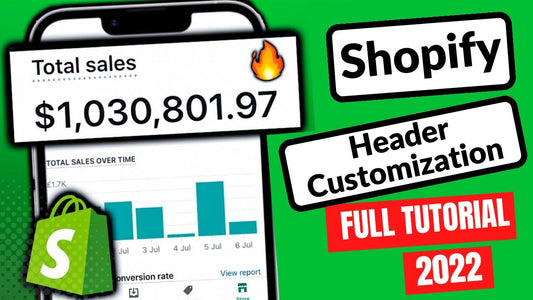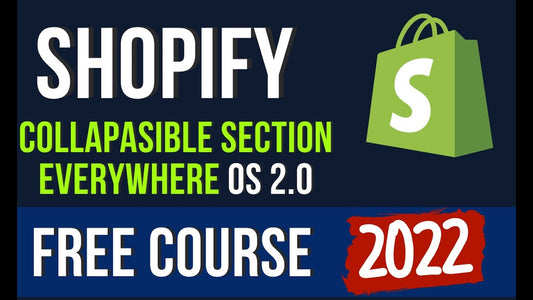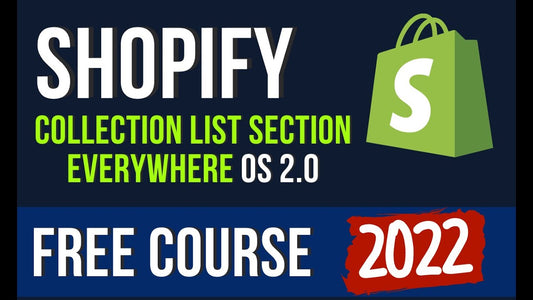
What is an Ecommerce Business
An ecommerce business is any business that buys and sells goods or services over the internet. Ecommerce business's will digitally transfer money and data to execute these online transactions.
With retail ecommerce sales worldwide reaching nearly $5 trillion in 2021, it’s never been a better time to start an online business.
If you’re a skilled entrepreneur or craftsperson, you’ve probably dreamed of starting your own ecommerce store and building a business that gives you a sense of achievement and freedom. You’ll learn each step in this guide.
3 Steps to Building an Ecommerce Store
1.Learn how to start an ecommerce business
2.Calculate ecommerce business start up costs
3.Understand profitability, audience and product
How to start an ecommerce business
We know that online shopping is booming. So, how do you realistically start an online business?
To help, we’ve put together a comprehensive blueprint for starting a business, compiled from Shopify’s most popular content. These blog posts, guides, and videos have been organized based on the most important tasks you’ll face when researching, launching, and growing a profitable e-commerce store.
1.Choosing a product
2.Research and prepare
3.Setting up your business
4.Preparing to launch
5.Post launch
1. Choosing a product
Finding a product to sell
The first step to building an e-commerce store is knowing what products you want to sell direct-to-consumer. This often is the most challenging part of starting a new online business. In this section, we’ll highlight strategies you can use to find product opportunities, explore the best places to look for product ideas, and finally, look at trending e-commerce products to consider.
Evaluating your idea
Once you have a product idea in mind, how do you know if it will sell? In this section, we’ll cover a few approaches that active entrepreneurs have used to validate their product ideas and potential market.
Obtaining your product
After landing on a strong product idea, your next step is figuring out where and how you’re going to obtain your products. The next four posts cover the various methods for acquiring your products, along with the pros and cons of each model.
- From Dropshipping to DTC, Here Are the Most Popular Types of Ecommerce Business Models
- How to Find a Manufacturer or Supplier for Your Product Idea
- How to Source Products for Your Online Store: Top Apps and Tips
- Print on Demand: A Low-Risk Way to Sell Custom Products
Sell your retail products online
Many independent retailers face a challenging road ahead. Shifting your brick-and-mortar business online can help you weather this storm, generate cash flow, and build a more resilient business. You’ll need to find a good ecommerce solution to build your store on, like Shopify.
2. Research and prepare
Research your competition
You’ve found your product, evaluated its potential, and sourced a supplier. But before you get into that, you’ll need to thoroughly research your competition so you know what you’re up against and how you can differentiate your business from theirs.
How to Conduct a Competitive Analysis for Your Business (Plus a Free Template)
SWOT Analysis: A Simple Way to Find Your Competitive Edge (Plus a Free Template)
Writing a business plan
With your competitive research complete, it’s time to write your business plan. A business plan is a roadmap that helps bring your ideas and thoughts together. It's vital in determining what to prioritize and how to effectively reach potential customers. A business plan also highlights your company's mission statement to show investors and employees the core values of your brand.
- How to Write the Perfect Business Plan in 9 Steps
- Business Plan Template: A Practical Framework for Creating Your Business Plan
3. Setting up your business

Choose a business name
Aside from finding an actual product to sell online, another challenging decision is determining your business or brand name and choosing an appropriate and available domain name. These blog posts will help you tackle these important tasks.
- Need a Catchy Online Store Name? Find Ideas With These Tips and Free Name Generators
Creating a logo
Once you’ve selected a memorable name and registered a corresponding domain, it’s time to craft a simple logo. In these resources, we’ll show you several options for creating a great logo for your new business.
- 1.Hatchful: A simple logo maker by Shopify
- 2.The Top 10 Paid and Free Logo Makers Online in 2022
- 3.How to Design a Memorable Logo in 7 Steps (We Make One From Scratch)
Understanding search engine optimization (SEO)
You’re almost ready to begin building your online store. However, before you jump into it, you should understand the basics of search engine optimization so you can properly structure your site and pages for Google and other search engines.
- The Beginner’s Guide to Ecommerce SEO
- Want to Rank Your Store? Get On Page One With This SEO Checklist
Building your store:
With a better understanding of search engines, it’s time to build out your store using a website builder. There are many crucial elements to consider. Below, we’ve listed our essential reads to help you build high-converting product pages, write captivating product descriptions, shoot beautiful product photography, choose your ecommerce color palette, and much more.
1.50 Exceptional Shopify Stores to Inspire Entrepreneurs
2.How to Optimize Your Product Pages For More Sales: 11 Expert-Recommended Tips
3.Product Description Examples and Tips to Inform and Persuade Your Customers
4.A Picture Is Worth a Thousand Sales: A DIY Guide to Beautiful Product Photography
5.Customizing Your Shopify Theme: How To Use Images, Colors, and Fonts
6.10 Must Know Image Optimization Tips
7.How to Create a Coming Soon Page and Start Marketing Before You Launch
Choosing your sales channels
One of the best ways to reach new customers is to choose sales channels where they already shop. The right mix of sales channels will depend on your products and your target market, but there are a number of great options that can complement and support your self-hosted store.
4. Preparing to launch
As you get close to the launch of your new business, there are several shipping and fulfillment elements you need to prepare for. In this section, we’ve curated a few comprehensive guides on how to determine your shipping strategy.
Ecommerce Shipping and Fulfillment: A Complete Guide (2021)
International Shipping: Everything You Need to Know to Deliver Beyond Your Borders
Shipping Strategy: Get Packages to Customers Without Cutting Into Your Bottom Line
How to Reduce Shipping Costs for Small Businesses: 6 Helpful Ways
It’s also a good idea to define your key performance indicators upfront so, once you launch, you know what measures of success to track.
5. Post launch:

Acquiring your first customer
Now that you’ve launched, the hard work of marketing your products begins. While many new store owners should consider selling their physical products in person, the rest of digital marketing relies on doing one thing well: driving targeted traffic. Next, we’ll share a variety of marketing tactics that will help you in your first months.
>How to Get Your First Sale in 30 Days: A Marketing Checklist for New Entrepreneurs
>Need Traffic? Here's How to Get Visitors to a New Website (Even If You Don't Know Where to Begin)
>Customer Acquisition: How to Calculate It and Create a Profitable Strategy For Your Business
Marketing your store
You’re well on your way now and likely have a few sales under your belt. It’s time to get serious and focused. The following posts will help you zero in on your top-performing ecommerce marketing tactics or expand into new ones for driving traffic and converting that traffic to sales.
EMAIL MARKETING ESSENTIALS
- Learn Email Marketing: Everything from List Building to Advanced Lifecycle Automation
- 7 Automated Email Campaigns That Win Customers and Keep Them Coming Back
- How to Write Engaging Welcome Emails (+ 12 Examples to Inspire Yours)
- What I Learned Analyzing 60 Days of Emails from a Fast-Growing Ecommerce Brand
DRIVING TRAFFIC AND CONVERSIONS FROM PAID ADS
- How to Advertise on Facebook: A No-Nonsense Facebook Ads Guide For Beginners
- The Google Ads Playbook: 13 Campaign Types And What to Expect From Them
- 17 Best Price Comparison Engines to Increase Ecommerce Sales
OPTIMIZING FOR HIGHER CONVERSIONS
- The Complete Guide to A/B Testing (Tips from Google, HubSpot, and Shopify)
- How to Find and Plug the Leaks in Your Conversion Funnels
- Drive More Ecommerce Sales with Live Chat Without Being Trapped at Your Desk
- 19 Growth and CRO Experts on Increasing Revenue Without Increasing Traffic
- 9 Ways to Earn Customer Trust When You Have Zero Sales
- The 39-Point Store Trust Checklist: How Trustworthy Is Your Online Store?
- Driving Traffic but No Sales? Here's How to Diagnose and Improve Your Store
USING ANALYTICS TO UNCOVER INSIGHTS
- The Beginner's Guide to Analyzing Shopify Reports and Analytics
- 5 Google Analytics Segments (and How to Use Them to Increase Revenue)
- 9 Google Analytics Custom Reports by the Experts (and How to Use Them)
- Facebook Custom Audiences 101: A Starter Guide for Ecommerce Businesses
How much does it cost to start an ecommerce business?
An ecommerce business can be started for as little as $100, which is spent on a subscription and purchasing a theme for your store. Ecommerce companies cost less than brick-and-mortar stores because they don’t require the same amount of licenses and permits, and you don’t need to pay rent for a retail space.
If you operate as a dropshipping business, for example, it’ll likely cost less to start because you don’t need to pay for raw materials, inventory, or manual labor. You only pay for products after a customer purchases them. If you’re creating your own products by hand or working with manufacturers, you’ll need to pay for equipment, materials, and labor upfront.
Many ecommerce entrepreneurs start a business on a shoestring budget. To get a better idea of upfront costs, we surveyed 150 entrepreneurs and 300 small business owners in the US to find out.
According to our research, new ecommerce store owners can expect business costs to total up to $40,000 in the first year, which is paid back to the owner through profit margins.
- Product: raw materials, inventory, supplier, manufacturing, patents, etc.
- Operating: incorporation/legal fees, additional software, accounting, etc.
- Online store: website/platform subscription, hosting/domain, contract developer/designer, etc.
- Shipping: packaging, labels, etc.
- Offline: stall/table fees, rent, gas, etc.
- Team/staff: salaries, benefits, perks, etc.
- Marketing: logo, branding, ads, printed materials, business cards, etc.

In the first year, business owners spent:
- 11% on operating costs
- 10.3% on marketing costs
- 9% on online costs
- 31.6% on product costs
- 8.7% on shipping costs
- 18.8% on team costs
- 10.5% on offline costs
Now, this doesn’t mean you will definitely spend $40,000 opening up your ecommerce store. The amount spent in the first year varied significantly, depending on industry and ecommerce business model, whether the business had employees, or if it was a full-time gig.
You also don’t need $40,000 in cash lying around to start an ecommerce business. While many (66%) entrepreneurs use their personal savings to fund their business (respondents could choose more than one funding source), they also used financial support from friends and family (23%) and personal loans (21%).
Tips for starting an ecommerce store:
Starting an ecommerce business is thrilling. Whether you’re starting your first or fifth one, keep the following tips in mind:
- Forget about year one profitability
- Know your target audience
- Sell an in-demand product
- Experiment with marketing and advertising
- Invest in outreach and link building
Forget about year one profitability:
Starting a successful ecommerce business is a marathon, not a sprint. Don’t measure business success by profitability in your first year. Give yourself a runway of 18 to 24 months for your business to get off the ground. Spend your first year testing, reiterating, and reinvesting your sales back into your business using the above budget guidelines.
Know your target audience
Outside of developing or sourcing products, you’ll spend a majority of your time getting the attention of customers. The challenge?, You want to get your products in front of the right customers—the ones who will actually buy on your site. Understanding these people, a.k.a. your target audience, can help you reach them faster and make more sales.
Sell an in-demand product
Create or sell an amazing product with proven market demand. Take a look at the top retailers today—Allbirds, Tushy, Bombas—and you’ll notice they all sell top-tier products. “Product quality is critical because a good product sells itself,” says Eric Even Haim, CEO of upsell and cross-sell app ReConvert. “When you marry a great product with an audience who’s hungry for it, your marketing becomes 10 times easier.”
Eric explains that new products don’t need to be the “next big thing.” You just need to “look for growing trends and markets where customers are underserved. Then step in with an excellent product and give them what they want!”
Two places to find market demand are:
- Google Trends: where you can research topics people search for
- Trends.co: which uses data to predict trend and business opportunities before they become popular.
When you marry a great product with an audience who’s hungry for it, your marketing becomes 10 times easier.



